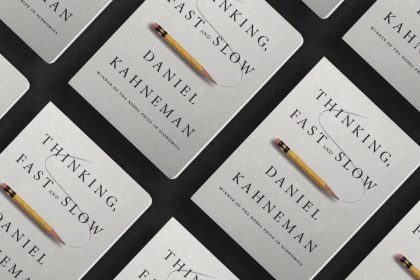Having had a long list of books that I’d been intending to read for a long while now, it was only a spontaneous decision to pick up Han Kang’s The Vegetarian after seeing all recent rage it created on the social media following its Nobel Prize.
The genre is unlike anything else I’ve ever read, as this is not my go-to genre, but saying I was immediately questioning certain beliefs instilled by society would be an understatement. Kang doesn’t draw conclusions or give you a definite answer; instead she leaves you with a torrent of questions that plague your mind long after you’ve read the novel.
As a brief context, The Vegetarian tells the story of Yeong-hye, a seemingly ordinary woman who one day decides to stop eating meat, a decision that spirals into something far deeper than a mere dietary choice. As the story progresses, her mental state deteriorates, which greatly impacts her relationships with her family and husband.
In the first section of the book, I was led into believing that there was something wrong with Yeong-hye simply because she has deviated from the path society had sketched out for her. But as the story progressed into the second and then the final section of the novella, every idea that I had been mentally constructing in the beginning began to crumble.
Perhaps that is what Kang was aiming to achieve too. She draws a fine line between sanity and insanity. These lines blur into each other so delicately that it would be safe to say that somewhere along the plot the reader may be left questioning their own sanity or the socially constructed definition of sanity and normalcy. As she puts it, “… after all these visits to the hospital, sometimes it’s the tranquil streets filled with so-called ‘normal’ people that end up seeming strange.”
On the one hand, Yeong-hye’s mental deterioration is shown through her increasingly erratic behavior, eventually leading her to the brink of death. Her elder sister In-hye’s mental condition is depicted as sound in the first two sections. Endowed with a successful business, stable marriage, and no outward sign of any mental distress was all it took for me as a reader to label her as the polar opposite of her younger sister when all along they couldn’t be more alike.
Here, Kang challenges the notion that an ordered exterior equates to mental stability. It is only in the final section of the book that In-hye’s point of view reveals her inner turmoil. For what it is worth, In-hye is the kind of a person who is always on the go; always helping, always doing something. A perfect mother, wife, daughter and employer, she is fixed to a track that runs round in circles, as if her movements are automatically powered, when in fact, her relentless activity and practicality is a coping mechanism that allows her to escape her intrusive and violent thoughts.
In-hye’s condition reminded me of a remark one of my professors once made: that an occupied mind is less prone to mental health issues. However, In-hye’s character challenges such oversimplified generalizations, particularly common in societies like ours in Pakistan, where conservatism and deeply ingrained traditional beliefs – similar to those in Korean society – often shape perceptions of mental health. And so, In-hye represents all those who suffer silently.
In retrospect, she reflects on all the times she has had self-harming thoughts, and how she repeatedly pushed them into the dark recesses of her subconscious. It seems as though her younger sister’s descent into madness forces her to confront the demons that had always lurked beneath her perfect exterior. It is almost as if Kang wants to dismantle societal constructs and suggest that returning to one’s most primal and instinctual self, as Yeong-hye does, is an act of courage.
In-hye admits to her cowardice in conforming to the demands that had been set upon her since her birth: “Now, with the benefit of hindsight, In-hye could see that the role that she had adopted back then of the hard-working, self-sacrificing eldest daughter had been a sign not of maturity but of cowardice. It had been a survival tactic.”
The psychological introspection that Kang carries out doesn’t end here. She uses the images of trees, forests and mountains to draw a deep connection between the human psyche and nature. The more her mind deteriorates, the closer she gets to nature. Nature serves as both a refuge and a source of strength for Yeong-hye. It is as if only after forgoing all societal expectations and responsibilities, can one meet one’s most raw and untamed self.
Her recurrent visions of vegetation, where her body morphs into a tree, signify her communion with nature – untampered and wild – helping her shirk human constraints for a primal and instinctual existence free from the violence of the human world. Similarly, the constant interruption of the present by flashbacks, visions and dreams explores the fluidity of reality: “Perhaps this is all a kind of dream.” They smudge the boundaries of what is real and what is imagined. As a result, the abnormal begins to look normal, while the traditionally normal starts to seem absurd.
In conclusion, the novel challenges our preconceived notions of sanity, autonomy, conformity, and ecological balance, forcing us to question the very definitions of normalcy. Through Yeong-hye’s gradual detachment from societal expectations and her communion with nature, Kang not only critiques the pressures imposed by modern life but also humanity’s exploitative relationship with nature. At the same time, In-hye’s internal struggles highlight how even those who appear to be functioning within societal norms may be quietly unraveling. Ultimately, the novel leaves readers with more questions than answers, making this work a haunting and thought-provoking reflection on the complexities of the human mind and its relationship with the natural world.

















A thought provoking article for sure. Makes us look at the book in a better way.
Wonderful content 👍
Nice
Nice content 👍👍
Amazing